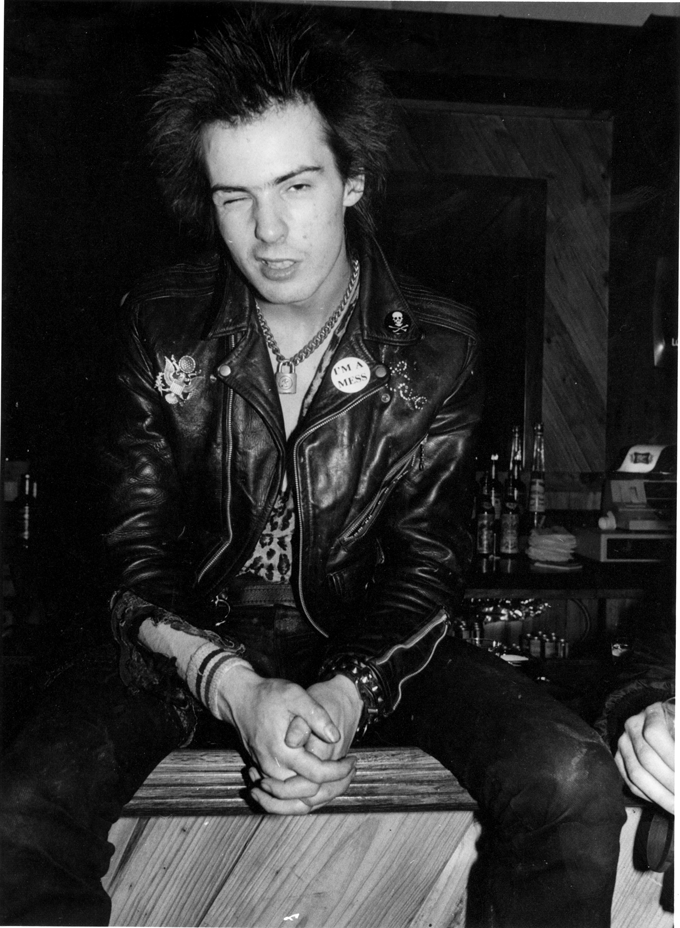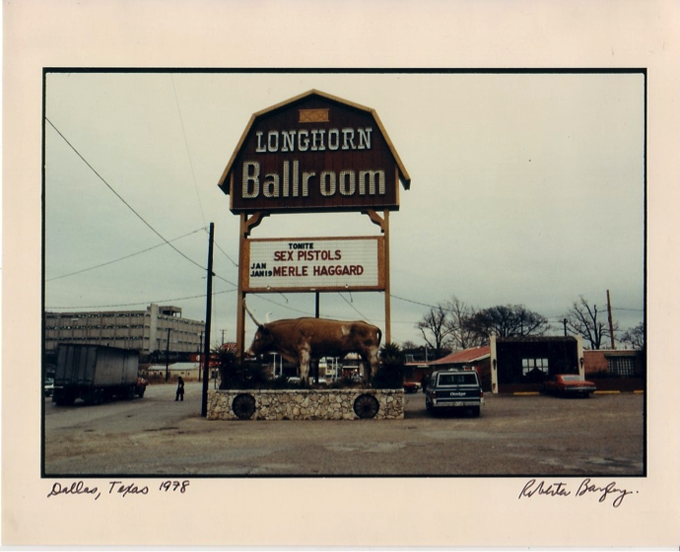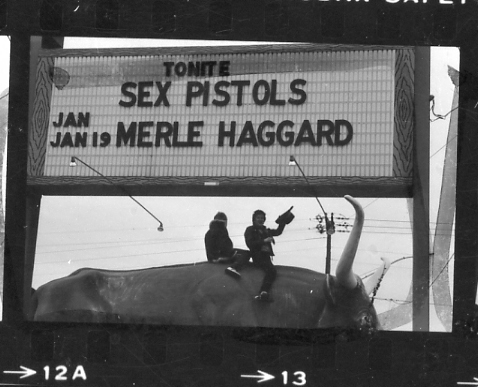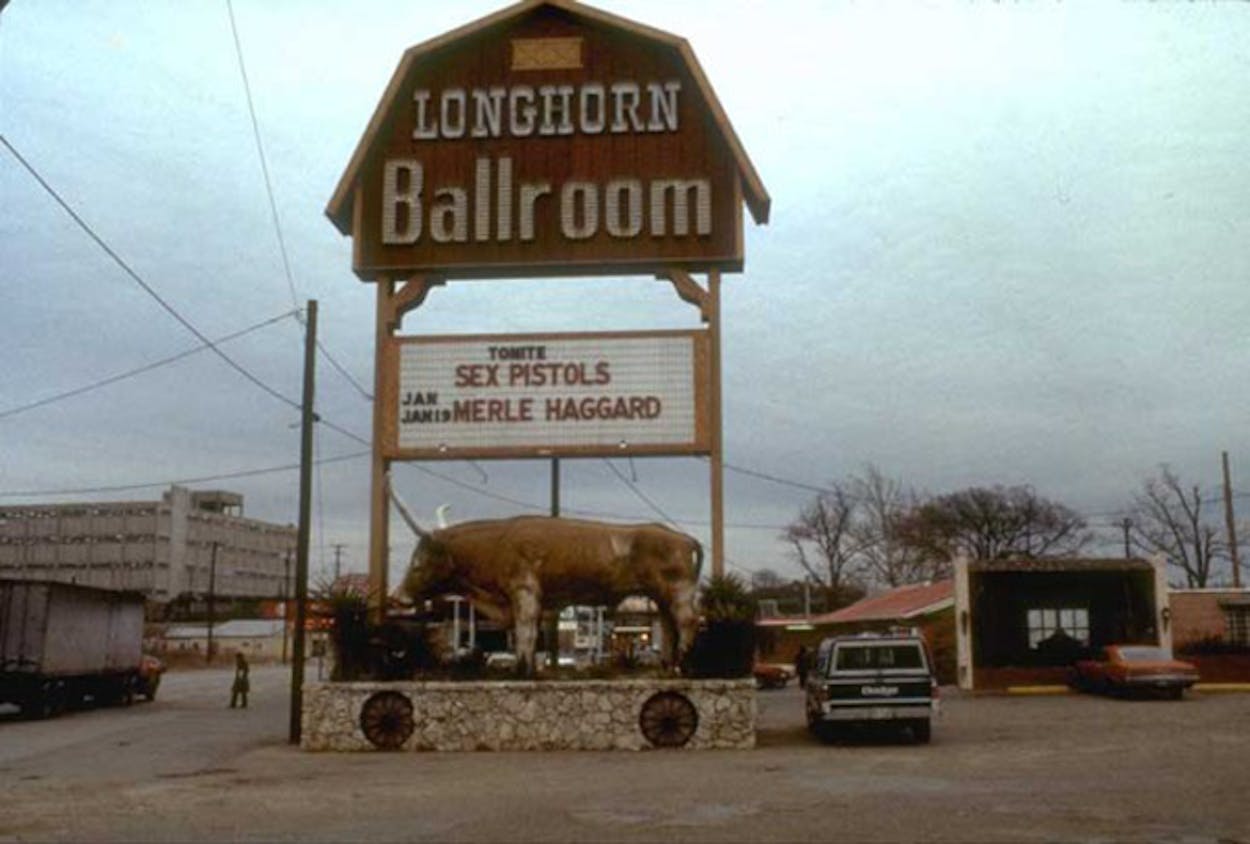The Sex Pistols’s notoriously ill-conceived 1978 tour of the U.S. was one of the more surreal moments in American pop culture history. The band had spent the previous two years violently yanking on England’s stiff upper lip, making international news by, among other things, dropping f-bombs on a London suppertime chat show and timing the release of a single “God Save the Queen”—which declared the prim monarch was fascist and inhuman—to coincide with the silver jubilee celebration of her 25 years on the throne. Though some considered them the embodiment of underclass unrest, the prevailing perception was simpler: that the band’s only interest was offending any and everyone. And so, after being banned from the radio and concert halls at home, singer Johnny Rotten (now John Lydon), bassist Sid Vicious, guitarist Steve Jones, and drummer Paul Cook set out for the States. But Malcolm McLaren, the band’s manager and mastermind who created the Pistols in the mold of an intensely profane, anti-Monkees, had no interest in building the audience. His goal was conflict and the free press it would generate. So he booked the tour throughout the South, and over nine days that January—36 years ago this month—the Pistols played in places like Memphis, Baton Rouge, San Antonio, and Dallas. Trailing them was a phalanx of now-famous photographers—names like Annie Leibovitz and Bob Gruen—who were charged with memorializing this world-class culture clash.
For those of us who were old enough to be aware of the Pistols but too young to attend—I was in the sixth grade in Austin, and my mom wasn’t going to drive me to anything in San Antonio but the Alamo or the zoo—the images are still mesmerizing. There’s heroin addict Sid Vicious onstage in San Antonio, unable to get drugs on the trip, with “Gimme a fix” carved into his chest. Or constitutionally disgruntled Johnny Rotten hunched over and leering at the crowd in Tulsa (or anywhere, really). But one of the most well-known images from the tour doesn’t show any of the band members. It was taken in the parking lot outside Dallas’ storied Longhorn Ballroom, onetime home of Bob Wills and his Texas Playboys, by a young New York rock photographer named Roberta Bayley. It’s a remarkable yet simple photograph, extremely subtle compared to the balance of the coverage. Against a wan, blue sky, a large, barn-shaped sign announces the honkytonk’s name. Closer to the ground, an eight-foot-tall statue of a steer is flanked by two wagon wheels. And in between, a marquee reads “Tonight Sex Pistols, Jan 19 Merle Haggard.” The message is immediate: this was a surreal collision of radically different cultures. Just a glance at the picture and you imagine that, shortly after the sun dipped below the horizon, somebody got his ass kicked.
It was one of the first photographs I looked for when, three years ago, I started Sponglr, a Tumblr examining perceptions of Texas. The blog’s purpose is identified in its subhead: “On Texas: How y’all think we look, and what we actually look like.” Under that rubric I’ve posted or reposted images of Texas icons, stereotypes, and everyday life, some acknowledged and to be expected, others goofy and out of the blue. The Longhorn Ballroom shot is a little of all that, an X-marks-the-spot intersection of exactly what one would and would not expect of Texas.
With a little online digging I found more of Bayley’s pictures from the tour, including some wonderfully incongruous shots of the Sex Pistols drinking Lone Stars, and a host of other, instantly recognizable images of seventies-era New York punk. So last week I called her to talk about that time. A California native who grew up in the sixties in San Francisco, she lived in London in the early seventies, where she worked in a boutique owned by McLaren and his partner, Vivienne Westwood. In 1974 she moved to New York and soon thereafter into an East Village apartment where she still lives—and which is still around the corner from Richard Hell, one of punk’s founding fathers. As the punk scene came together, she took a job working the door at CBGB’s, becoming friends with and photographing all the local players—Blondie, the Ramones, Talking Heads, Television—and every punk act that passed through town. In 1976 she shot the cover of the Ramones’ seminal first album.
On January 7, 1978, she was working as principal photographer for Punk magazine when she received what she refers to now as “a mysterious phone call” telling her that a first-class plane ticket was waiting at the airport to take her to San Antonio the next morning to meet up with the Pistols. (Controversial High Times founder Tom Forcade was paying for her and John Holmstrom, the editor of Punk, to make the trip, but he preferred for that fact to be kept under wraps.) “I didn’t ask any questions,” she told me. “Everybody in New York was pissed the Pistols weren’t coming here. I was thrilled to get to go.”
She still sounds excited talking about it now, and she was generous with her recollections and other photos from the trip. She looked over old contact sheets while we talked on the phone and had an easy time telling where the photos of her first trip to Texas began. The night before the flight, she said, she’d shot a Ramones show at a club called the Paladium. “The last picture from New York is of some guys with a chimpanzee on Fourteenth Street that I saw on my walk home. The first one I took in Texas was of stacked cases of glass bottles of Coke that I saw at the airport. We didn’t have bottled Coke in New York.” That little taste of culture shock would soon seem quaint.

That San Antonio gig was really scary. Those weren’t fans up in the front. Half of the people were there for curiosity, but the other half were there to cause trouble. People spit on the band. They threw cans of beer at the stage all night. It wasn’t like the shows I was used to. The Ramones played for Ramones fans. They didn’t take a lot of opening slots because when they played with other bands, they played for people who didn’t get it. But Malcolm’s intention was confrontation. He specifically chose not to send them to Austin because Austin was aware of the Ramones and the Sex Pistols.

My photos in San Antonio are from the back of the room. I’d come to meet the tour on the same flight as Annie Liebovitz, and she went right in the middle of all that. I chose not to. There was a feeling of . . . menace isn’t the right word. But there was a definite sense of violence. That was the show where Sid swung his bass at that guy.

John Lydon kept to himself. Punk had covered the band and run a long interview with him, so I knew he was intelligent. But he was not sociable. When I got on the band’s bus briefly in San Antonio, he just said, “That’s highly unadvisable, young lady.”
I took this photo that night and don’t think it’s ever been published, except maybe in Punk in 1978. It’s from after the show, after the crowd had dispersed and the band came out to mingle. That was a big part of the punk ethos: the band wasn’t separate from the audience. So the Pistols came out to check out the space, to admire all the beer cans on the floor and talk to the contingent of English press that was following them. The Sex Pistols coming to America was a big British press story.
They looked terribly unhealthy. They had skin like reptiles that had been underground their whole lives, like salamanders, beyond even the standard English pasty look. And they looked freaky, especially for Texas. You didn’t see orange spikey hair back then. They were young, like 21 or 22, and this was their first real tour. When they went on the Anarchy Tour in England, most of their shows were canceled, so they’d just travel to a city and not play. But by now they were starting to feel manipulated by Malcolm. He didn’t have their backs. He was an intellectual, a provocateur, and in America he realized they were “becoming a rock band.” That wasn’t interesting to him. And they were getting fed up with being Sex Pistols.

Sid was sitting on the bar in Dallas, and I was lecturing him. He’d said, “I want to be like Iggy. I want to die before I’m thirty.” So I had to explain that Iggy was past thirty. And he was still alive. But Sid was just so self-destructive. Going on tour when you’re strung out and can’t get any drugs must have been miserable. Malcolm couldn’t get him any heroin, so he drank heavily. He was just a mess. I think he was a nice guy, but he got caught up in this punk thing and started acting out, doing what he thought he was supposed to be doing.

I had just flown into Dallas with Malcolm, Steve, Paul, and John [Holmstrom] and gone to the club. I figured the band would do a sound check and was hoping for access. But Sid and Johnny were riding on the tour bus, and it wasn’t there yet. So I took some pictures. We thought that sign was cool. It was ironic. We knew who Merle Haggard was. And it was just a nice shot. The sky is a nice color of blue. I like that truck in the parking lot.
 Steve had this cowboy hat he’d bought in Memphis or San Antonio. He and Paul thought it was so funny to be in America and Texas. “Hey, there’s a bull! Let’s go get on it!” What else were they going to do?
Steve had this cowboy hat he’d bought in Memphis or San Antonio. He and Paul thought it was so funny to be in America and Texas. “Hey, there’s a bull! Let’s go get on it!” What else were they going to do?
 Roberta Bayley with Sid Vicious. (Photograph by Bob Gruen.) To see more of Roberta’s work, click here.
Roberta Bayley with Sid Vicious. (Photograph by Bob Gruen.) To see more of Roberta’s work, click here.








